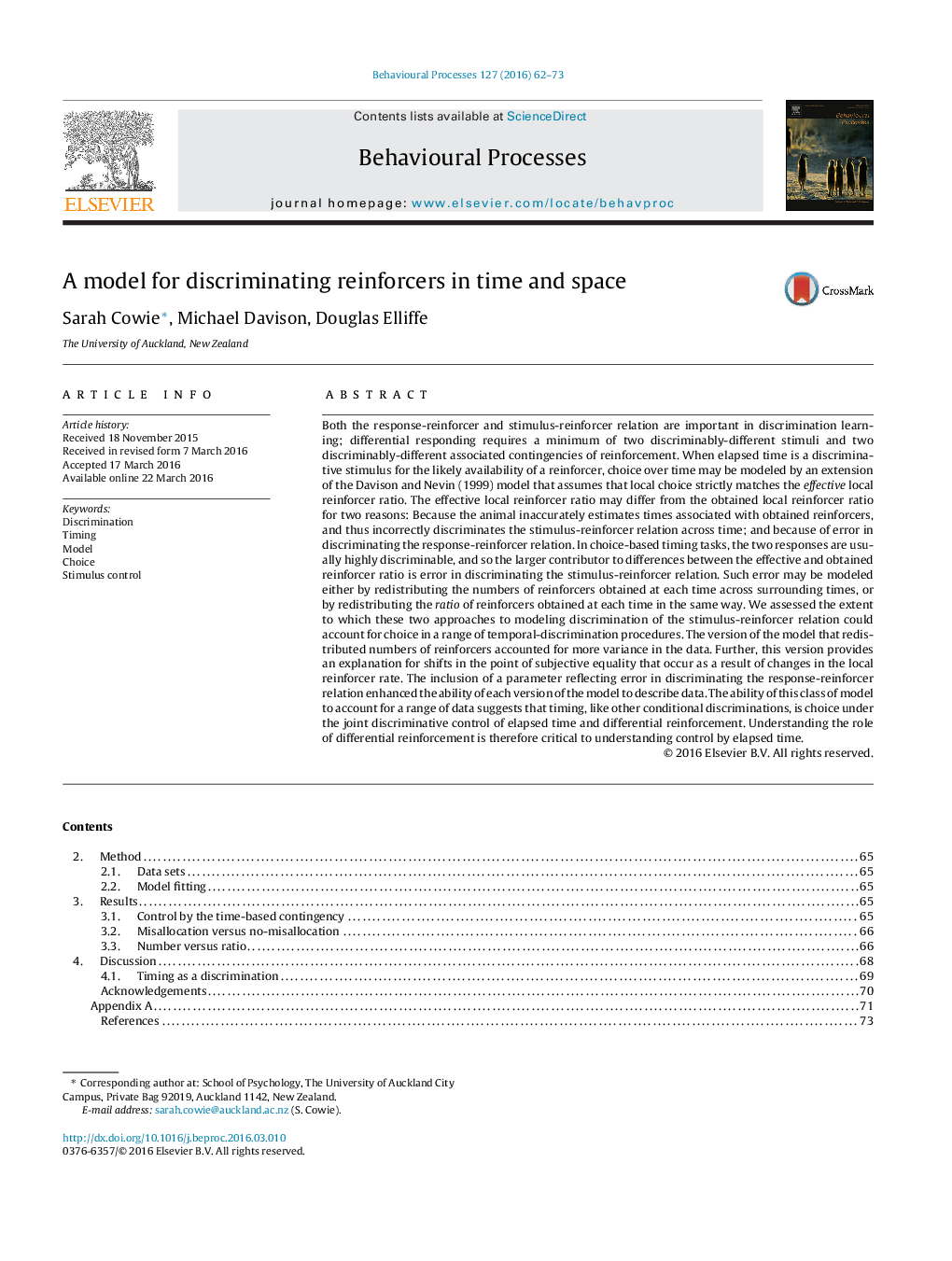| کد مقاله | کد نشریه | سال انتشار | مقاله انگلیسی | نسخه تمام متن |
|---|---|---|---|---|
| 2426437 | 1553153 | 2016 | 12 صفحه PDF | دانلود رایگان |
• Temporal discrimination performance may be described as behavior under stimulus control by elapsed time.
• We present a model for describing choice in temporal-discrimination procedures in terms of discrimination of the stimulus-reinforcer and response-reinforcer relation.
• The model described data from a variety of choice-based temporal-discrimination procedures, with different subjects, time markers, and relations between elapsed time and the likely availability of a reinforcer.
• We suggest that choice on timing tasks might be more thoroughly understood in terms of a stimulus-control approach to temporal discrimination.
Both the response-reinforcer and stimulus-reinforcer relation are important in discrimination learning; differential responding requires a minimum of two discriminably-different stimuli and two discriminably-different associated contingencies of reinforcement. When elapsed time is a discriminative stimulus for the likely availability of a reinforcer, choice over time may be modeled by an extension of the Davison and Nevin (1999) model that assumes that local choice strictly matches the effective local reinforcer ratio. The effective local reinforcer ratio may differ from the obtained local reinforcer ratio for two reasons: Because the animal inaccurately estimates times associated with obtained reinforcers, and thus incorrectly discriminates the stimulus-reinforcer relation across time; and because of error in discriminating the response-reinforcer relation. In choice-based timing tasks, the two responses are usually highly discriminable, and so the larger contributor to differences between the effective and obtained reinforcer ratio is error in discriminating the stimulus-reinforcer relation. Such error may be modeled either by redistributing the numbers of reinforcers obtained at each time across surrounding times, or by redistributing the ratio of reinforcers obtained at each time in the same way. We assessed the extent to which these two approaches to modeling discrimination of the stimulus-reinforcer relation could account for choice in a range of temporal-discrimination procedures. The version of the model that redistributed numbers of reinforcers accounted for more variance in the data. Further, this version provides an explanation for shifts in the point of subjective equality that occur as a result of changes in the local reinforcer rate. The inclusion of a parameter reflecting error in discriminating the response-reinforcer relation enhanced the ability of each version of the model to describe data. The ability of this class of model to account for a range of data suggests that timing, like other conditional discriminations, is choice under the joint discriminative control of elapsed time and differential reinforcement. Understanding the role of differential reinforcement is therefore critical to understanding control by elapsed time.
Journal: Behavioural Processes - Volume 127, June 2016, Pages 62–73
